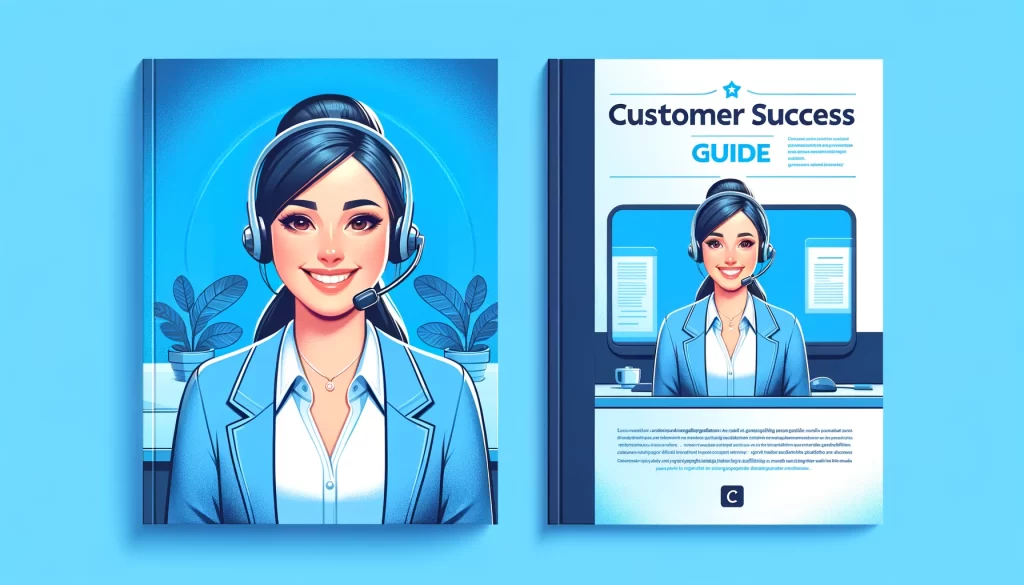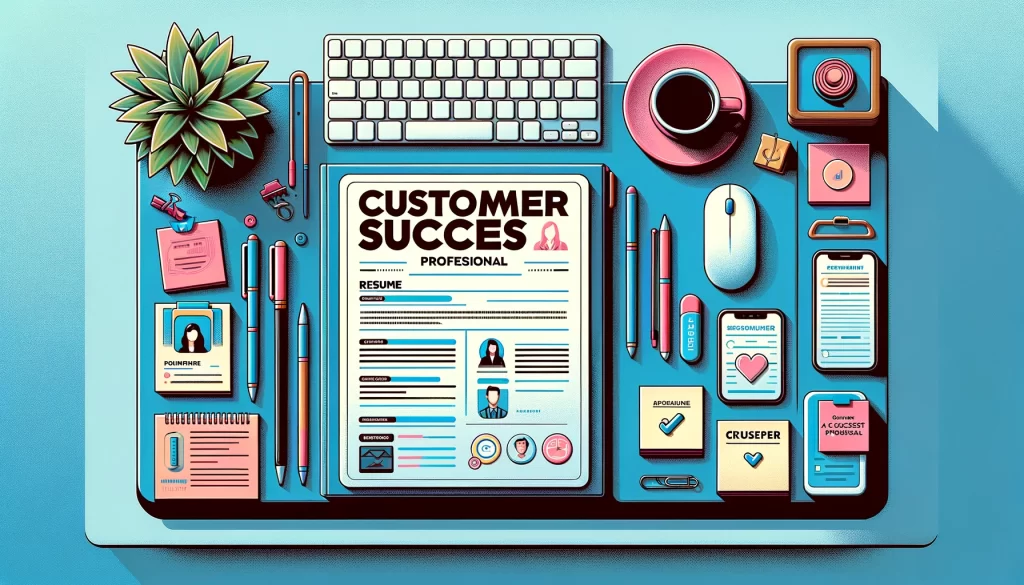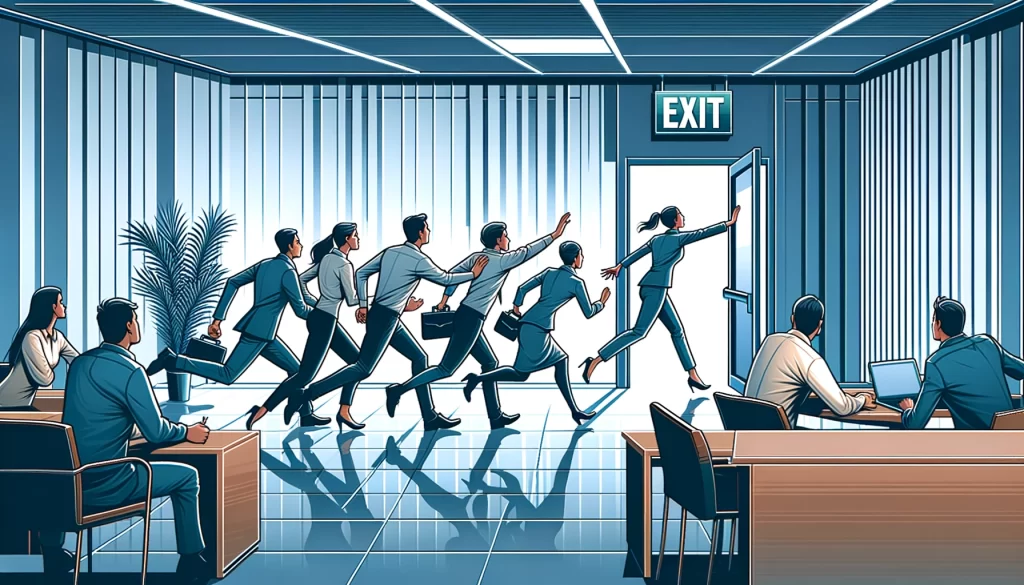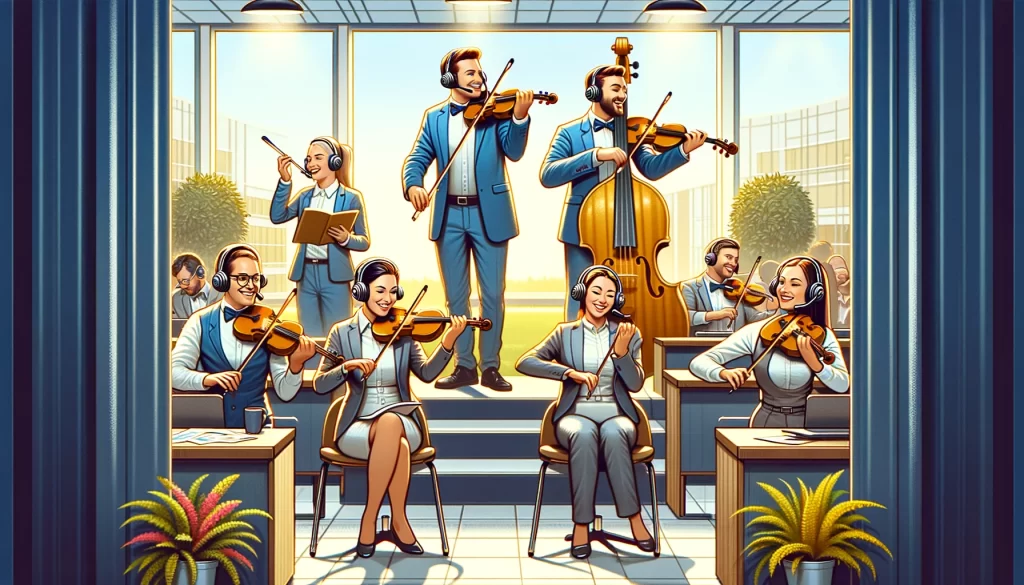
The Ultimate Guite To Customer Success In 2024
Introduction
We’re all on the same page when it comes to understanding that retaining customers is as crucial as oxygen for a company’s financial well-being – it’s the lifeline that ensures survival.
Now, let’s plunge into the dynamic world of Software as a Service (SaaS), where the real game is convincing customers to keep coming back, and here’s where loyalty takes center stage.
Picture this: a rising star in the market, stealing the spotlight – the indispensable force known as Customer Success.
But why has it become an absolute must for any company aiming to forge a lasting bond with its customers?
That’s the inside scoop you’re about to dive into within the pages of this guide, graciously presented by the experts at BrazilDesk. Get ready to savor the insights!
Table of Contents

What does a Customer Success Professional do?
As the title suggests, these maestros of Customer Success (CS) are here to guide their clients on the path to triumph, ensuring they hit their goals when they sign up for a service.
But how does CS weave its magic to make this happen? Well, it all starts with keeping a close eye on the entire customer journey within the company.
This watchful gaze kicks off with that initial dance between the Customer Success pro and the fresh-faced customer – a handoff ceremony from the sales rockstars to the CS maestros overseeing the account.
From there, it’s a journey through the intricacies of adapting to the company’s product or service (extra caution required during the onboarding tango), aligning objectives, crafting and executing the strategic plan, and keeping a vigilant eye on the ongoing results.
Now, for this vigilant monitoring to hit all the right notes, it’s absolutely crucial not to switch CS maestros during the customer’s tenure.
Consistent interaction deepens the account manager’s understanding customer – quirks and all. It’s not just about fixing problems as they pop up; it’s about building a rock-solid bond of trust with the customer.
But to be effective, Customer Success has to be proactive. That means regular check-ins, gathering feedback on the product or service (ensuring it’s used correctly), being the first to tackle questions, predicting issues before they rear their heads, and swiftly finding solutions – essentially showing genuine care for the client’s success.
The relationship Customer Success cultivates with its clients
It’s a far cry from the traditional customer service vibe. The old-school post-sale support is like a superhero coming to the rescue only when the customer signals distress or contemplates breaking up with the service.
Traditional customer service often involves someone from the company reaching out solely to push more products or services. Focused on firefighting or snagging an extra sale, this approach doesn’t exactly set the stage for long-term commitment from customers.
Now, let’s sculpt the ideal profile for a Customer Success Pro.
There’s a whole checklist of must-haves for these rockstars. Proactivity, as we’ve dished out earlier, is a game-changer.
Experience in customer relations is a plus – that’s why many companies tap into the talents of sales champs and account managers for CS roles. The same goes for those with a background in customer service in advertising agencies – their daily dance with consumers makes them ideal candidates.
Our ideal Customer Success pro isn’t just a consultant; they’re the Sherlock Holmes of the market they operate in.
Deep knowledge of the business and the product or service is non-negotiable.
Picture this – if the company is offering a subscription to a management system, our CS maestro needs to be the go-to guru in automation tools for management.
No room for uncertainty or, heaven forbid, knowing less than the customer about what you’re selling. That’s a trust-buster and a deal-breaker.

Academic Navigation for Customer Success
When it comes to crafting the ideal academic background for a Customer Success (CS) pro, the landscape might seem a bit like a choose-your-own-adventure novel – no one-size-fits-all consensus, but patterns that catch the discerning eye.
In the ever-evolving world of CS, there are even specialized courses in the United States designed to mint experts in Customer Success Management. Now, let’s rewind the clock to a fascinating survey by the American blog Software Advice back in 2014. Brace yourself for some enlightening takeaways!First on the docket – a whopping 62% of companies are on the hunt for a pro with some form of higher education.
Break that down, and you’ve got 44% waving the bachelor’s degree banner, while 18% are tipping their hats to those who’ve conquered the master’s realm. The academic landscape is a sprawling terrain, with diversity reigning supreme, each company carving its own niche.At the summit of the academic hierarchy is the realm of business administration, the preferred haunt for 60% of these discerning companies.
Right on its heels are the more technical domains – think computer science, engineering, information systems, and the ever-dynamic field of marketing.Now, let’s unpack the why behind the tech-heavy emphasis.
The Customer Success sector is the unsung hero for SaaS companies, the backbone of subscription-based businesses, and the guardian of customer retention and loyalty (cue the drumroll for our next section where we’ll dive into the SaaS market). As for marketing, it’s no surprise they’re welcomed with open arms – these maestros are already in the groove of customer dealings and have the secret sauce to reach the target audience.Another plot twist in this academic saga – a staggering 44% of these companies are on the lookout for pros seasoned with a minimum of 3 to 5 years of market experience, especially those who’ve waltzed through roles involving direct customer interaction.
But wait, there’s more! About 32% of these eagle-eyed companies have a soft spot for pros with a toolbox of specific software skills. In this realm, 47% have a fondness for virtuosos in Customer Relationship Management (CRM) tools – a logical love affair, given that these software wizards are the unsung heroes streamlining customer relationships.
And let’s not forget the allure of other tools like marketing automation and sales platforms (cue the spotlight on HubSpot), adding an extra layer of charm to the profile of a Customer Success maestro who’s mastered these digital symphonies.
What does success mean in CS?
Ever wondered what makes a Customer Success (CS) professional tick?
Well, as the name graciously suggests, their main gig is to be the wizard behind the curtain, orchestrating the path to success for their cherished clients.
Success here isn’t just a vague term; it’s about hitting those intended goals when they sign up for a service.
But how does this magic unfold? Cue the spotlight on the various notes that make up the CS symphony, starting with a keen eye on the entire customer lifecycle within the company.
The opening act of this close monitoring extravaganza kicks off with the debut encounter between the Customer Success maestro and the wide-eyed customer – a baton passed from the sales virtuoso to the CS conductor overseeing the account.
From there, it’s a journey through the intricacies of embracing the company’s product or service (extra caution on the onboarding stage), aligning objectives, crafting and executing the strategic plan, and vigilantly watching the ongoing results.
Now, for this vigilant monitoring to hit all the right notes, it’s a golden rule to keep the CS conductor consistent during the customer’s tenure.
Imagine it as a musical duet – continuous interaction deepens the account manager’s understanding of the customer, quirks, and all. It’s not just about fixing glitches as they pop up; it’s about crafting a rock-solid bond of trust with the customer. Think of it as the harmony that keeps the relationship humming.
Pioneering Proactivity in Customer Success
Now, let’s peel back the layers on how Customer Success truly takes the driver’s seat in ensuring clients not only stay afloat but thrive.
Picture this: a symphony of frequent follow-ups, a meticulous gathering of feedback on the product or service (ensuring it’s used to its full potential), a proactive stance in addressing queries, an artful anticipation of issues before they rear their heads, and a swift dance towards solutions. In essence, it’s a genuine expression of care for the client’s success, a commitment to not just meet but exceed expectations.
Now, let’s talk about the unique relationship Customer Success cultivates with its clients, a far cry from the traditional customer service dance. The conventional post-sale support operates on a reactive frequency – a troubleshooter that springs into action only after the customer raises an issue or contemplates waving the contract goodbye.
In the traditional customer service waltz, it’s not uncommon for someone from the company to extend an olive branch solely to peddle additional products or services. But let’s face it – a relationship focused solely on firefighting or clinching an extra sale isn’t the foundation for a long-lasting connection. Customers aren’t likely to stick around for the encore.
The Landscape of Customer Success Operations
As we embark on this exploration, it’s paramount to understand the dynamic areas where Customer Success (CS) unfurls its wings, particularly within the thriving landscape of Software as a Service (SaaS) companies. Here, in the heartbeat of the SaaS realm, CS professionals find their most fertile ground and the primary arena to showcase their prowess.
But what’s the pivotal role of CS in this context? To crack the code, we need to peer into the workings of a SaaS business.
In the realm of subscription-based services, revenue unfolds gradually, a steady drip akin to a Monthly Recurring Revenue (MRR) stream.
Unlike the instant gratification of a substantial sum from a new customer, the SaaS model secures a continuous and recurring income. The magic happens when the customer stays loyal over time, transforming the business’s returns into a symphony of sustained success.
Yet, in today’s market, customers face an abundance of product/service options, each vying for attention. Long-term contracts are becoming scarce, the cost of switching between companies is low, and consumers, armed with extensive research, are more discerning than ever about their spending choices.
In this landscape, the linchpin for SaaS companies to nurture loyalty and secure consistent income lies in the unique service offered by Customer Success. The customer relationship is no longer a mere transaction; it’s a strategic cornerstone.
But the impact of CS on a SaaS business goes beyond customer retention. These professionals wield tools like marketing automation to nurture leads and streamline onboarding processes, not only enhancing customer experience and retention rates but also elevating the company’s competitive advantage across multiple fronts.
Now, let’s navigate the terrain where CS might not be the compass guiding the ship.
Despite the plethora of benefits, there are scenarios where Customer Success might not be the golden ticket and could even weigh on a company’s financial performance.
This becomes particularly relevant when the revenue stream is anchored in selling standalone products—think lifetime software licenses—and concluding the relationship there.
The same holds true for companies with a notably low average transaction value. In such cases, maintaining a CS team might not be cost-effective. The expenses associated with these professionals may outweigh the benefits, especially if the customer base demanding this level of service isn’t sufficient to cover the costs.

Ways to Prevent Customer Churn Nightmare
In the realm of business fears, a towering specter for any company is the ominous high churn rate – a scenario where a significant number of customers part ways, canceling contracts and bidding farewell to the business.
For Software as a Service (SaaS) companies, this fear takes on a heightened urgency. Frequent cancellations mean customers not generating revenue for months, inevitably leading to substantial losses.
Enter the stalwart defender against churn – Customer Success, with its proactive approach to customer relations. Like a vigilant guardian, Customer Success takes center stage, monitoring churn rates daily, and proactively addressing potential issues before they snowball into contract cancellations.
The mantra is simple: act before a customer’s complaint transforms into a departure, progressively reducing churn and safeguarding against customer exits. Without this strategic intervention, customers may veer away from the intended goals of the contracted product or service.
There are certain key indicators within the customer’s relationship with the product or service that serve as red flags for potential churn. Customer Success, during their follow-ups, needs to pay keen attention to these vital signs.
Firstly, the implementation of the tool or system in the customer’s business is a crucial checkpoint.
If not executed properly, customers won’t achieve the desired results, potentially perceiving the system as faulty and leading to contract cancellation. Customer Success must closely monitor this implementation process, taking an active role rather than leaving everything in the hands of the customer.
Monitoring extends to the frequency of product or service usage and the utilization of vital features. Low frequency or neglect of crucial features signals a challenge in reaching expected objectives, casting the shadow of churn. This attentive watch is key, measuring usage through metrics like logins or engagement for tools, ensuring customers maximize the intended benefits.
Equally critical is the assessment of system usability, a pivotal factor shaping the user experience (UX).
A negative UX, stemming from challenges in using the tool or system independently, could propel customers toward churn. Customer Success should be relentless in seeking feedback to make targeted improvements in product or service usability, ensuring a positive user experience.
In the grand symphony of Customer Success, making training accessible, even remotely, becomes a crucial crescendo. Guiding customers in the effective implementation and use of the product or service, showcasing its full spectrum of features, and conducting constant follow-ups are the linchpins in maximizing usage and closing the door on issues and complaints that may lead to churn.

Customer Success in Cross-Selling and Up-Selling
In the intricate choreography of company revenue, Customer Success emerges as a star performer, wielding its influence in the realms of up-selling and cross-selling.
Let’s unravel the strategic moves that Customer Success employs to not just retain customers but also elevate the company’s bottom line.
Up-selling, the art of persuading customers to opt for more lucrative products or service upgrades, takes center stage, and Customer Success proves to be the maestro in this orchestration.
The first act is retaining the customer, an area where Customer Success excels.
Selling to existing customers is a dance that’s 50% easier than wooing new prospects, thanks to the established trust and familiarity with the brand.
Once the customer is securely nestled within the company’s embrace, up-selling becomes the natural progression in their lifecycle.
However, the key lies in recommending upgrades that bring tangible benefits and growth for the customer – aiding them in reaching new goals or solving existing problems.
For instance, in the realm of a content marketing company, up-selling might involve transitioning from a plan delivering four articles monthly to one providing a robust 20 articles.
This leap generates five times more content for the client’s blog, translating into tangible benefits like increased organic traffic, heightened user engagement, and enhanced brand awareness.
Crucially, the recommendation for an upgrade should align with the customer’s success, ensuring that it’s not merely a ploy to boost company revenue.
Blindly pushing for a pricier plan without considering its impact on the customer’s success can backfire, diminishing the customer’s lifecycle within the business and potentially leading to churn.
Customer Success doesn’t stop at up-selling; it also takes center stage in the ensemble for cross-selling – a strategic play involving the sale of various products or services to the same customer.
Imagine a content marketing company not just negotiating article delivery but also offering additional services like e-book production, material layout, and social media promotion for each article.
This intricate dance results in a substantial revenue boost for the business. Similar to up-selling, cross-selling is a suggestion only when it contributes to the customer’s success.
In this nuanced dance, whether it’s an “up” or “cross,” Customer Success becomes the linchpin.
The deeper the relationship and understanding of the customer’s problems and needs, the more likely they are to find success and satisfaction, ensuring a harmonious and lucrative partnership between the company and its clientele.

Conclusion
In this guide, we’ve explored how Customer Success is essential for retaining and fostering customer loyalty. With a proactive approach (distinct from traditional customer service) and the profile of someone experienced in dealing with the public, this professional epitomizes what is necessary to cultivate a relationship with the increasingly demanding modern consumer.
Customer Success has become the differentiating factor for the survival of SaaS companies, making it highly valued.
If you need to outsource your Customer Success management to a reputable and experienced company, BrazilDesk will be happy to assist you. Save costs by outsourcing to a company in Brazil that specializes in the field. Visit our website for more information: https://brazildesk.com/outsourced-customer-success/
Article originally published on LinkedIn: The Ultimate Guide To Customer Success In 2024 | LinkedIn
Author
-

As an American living and doing business in Brazil for 8 years, I've got a love affair with this vibrant country, its culture, and its unique business landscape. Married with two adorable kiddos, I'm a business-savvy globetrotter who's explored every corner of Brazil. I earned my business chops while living and studying in the Big Apple (New York City, baby!). With over 10 years of copywriting experience under my belt, I've penned articles for numerous Brazilian and American publications, dishing out business tips and insights on Latin America and beyond. I'm here to help you navigate the exciting world of business, one blog post at a time!
